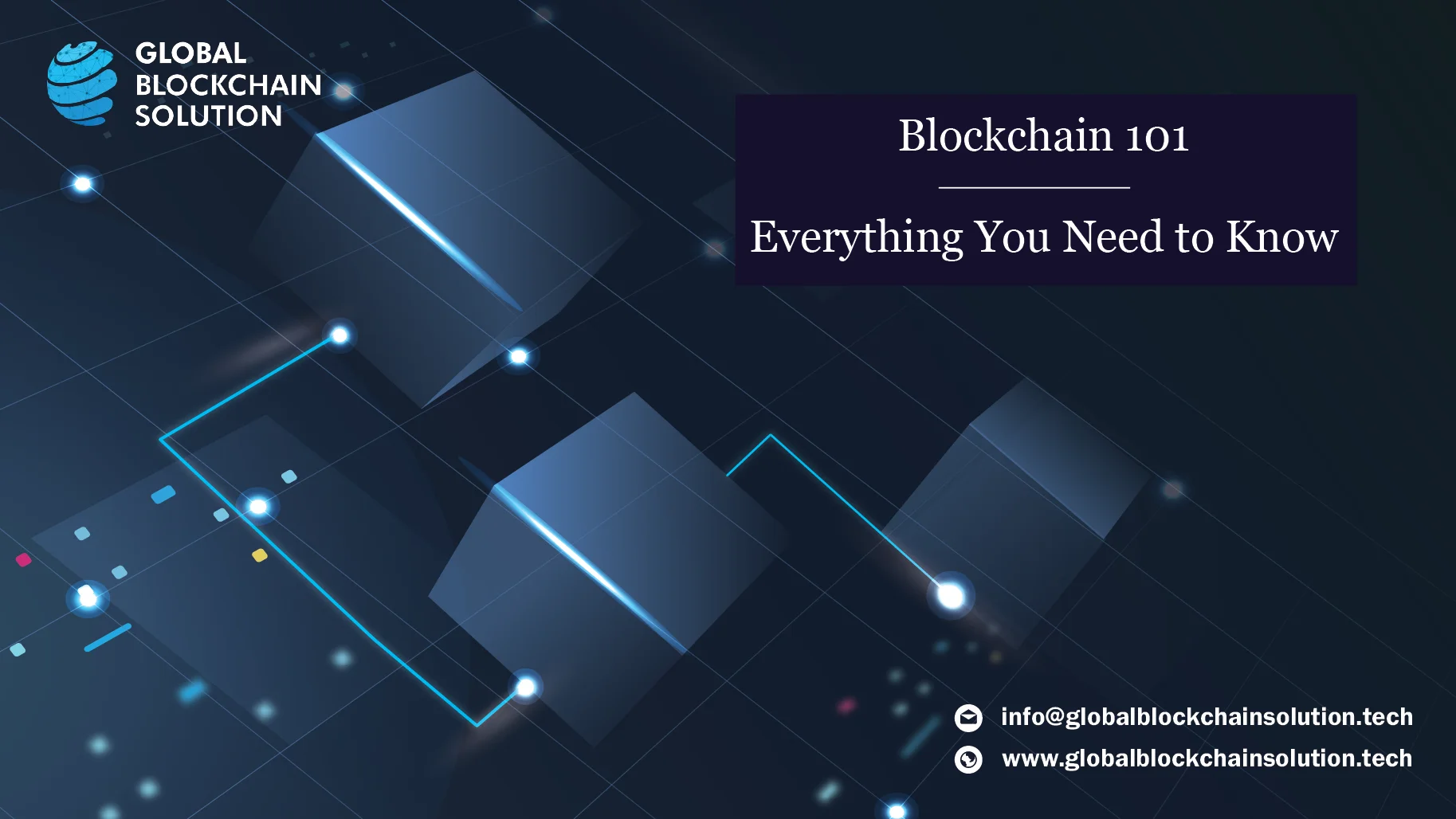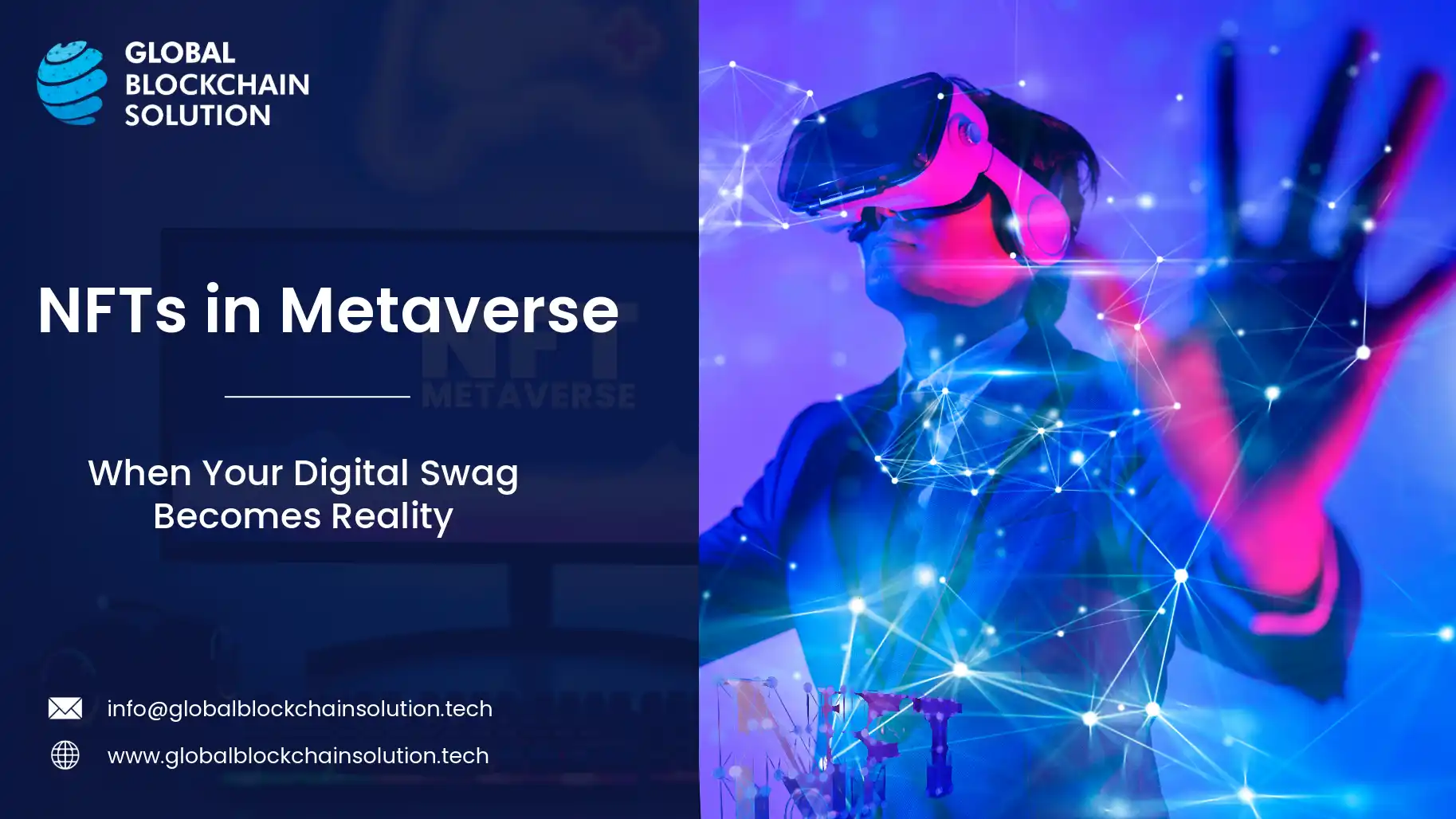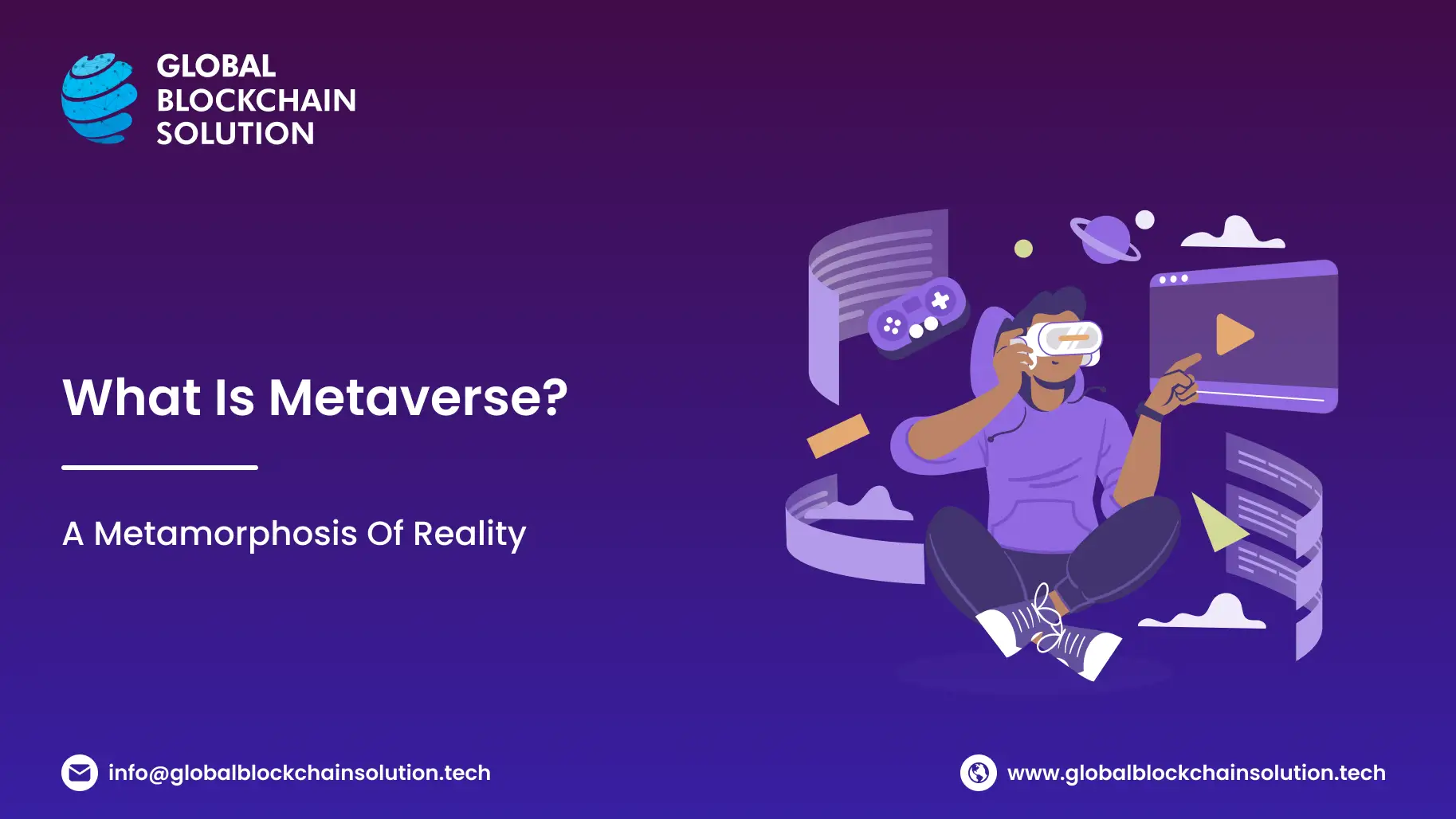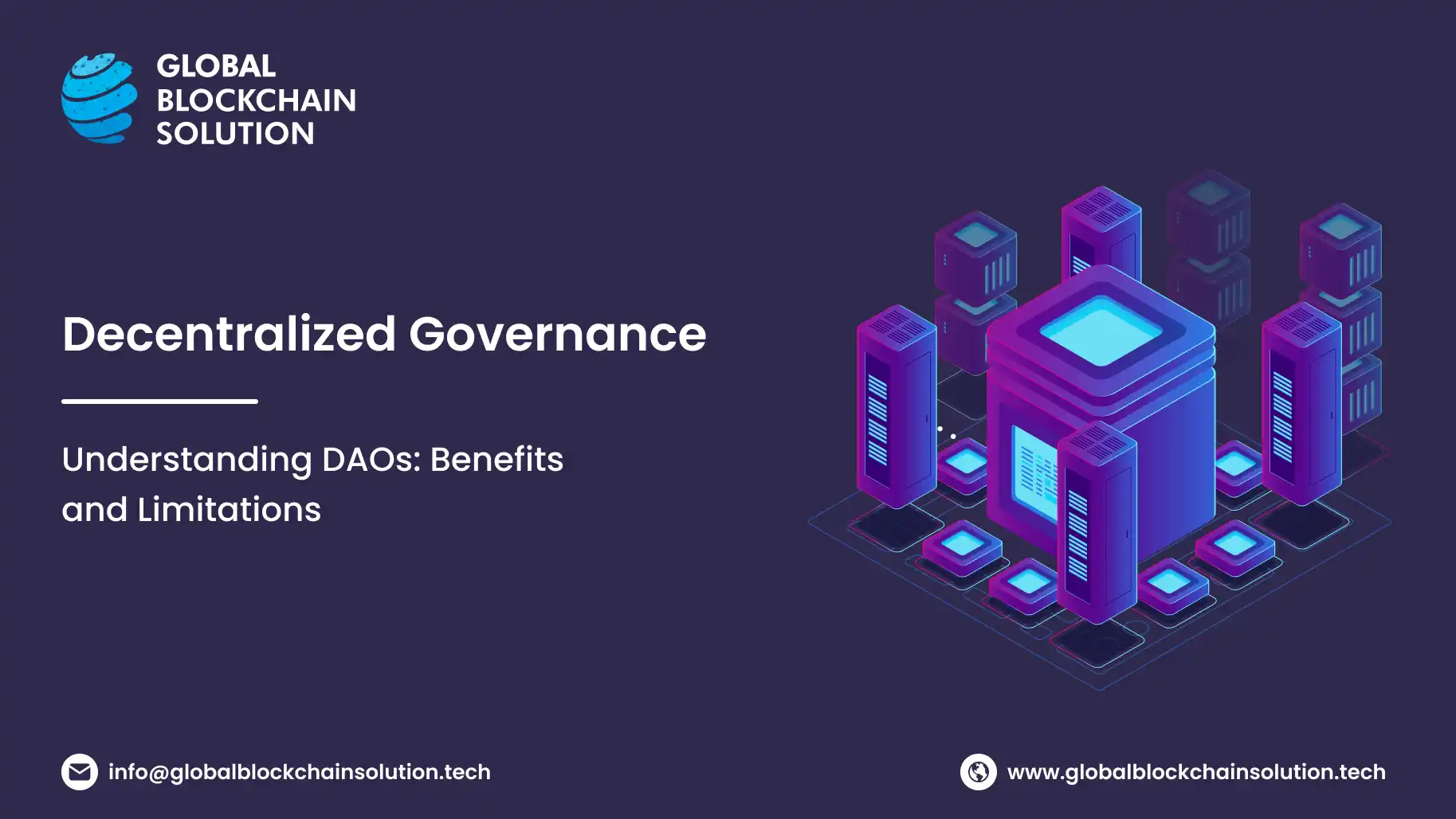You keep hearing about blockchain technology and how it's the next big thing since sliced bread. But every time you try to understand what it is, you get lost in a maze of technical mumbo-jumbo. Well, don't worry!
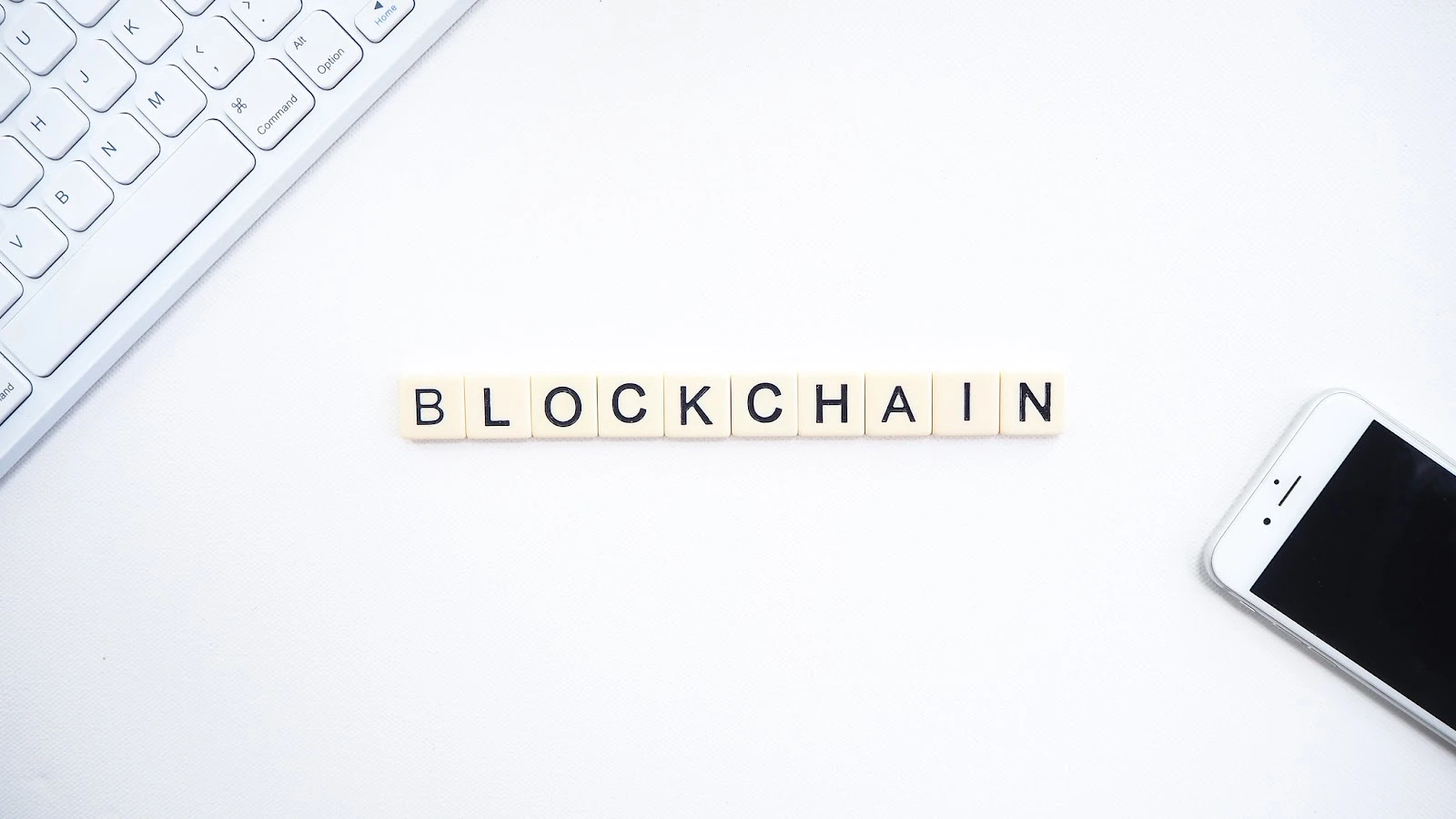
This guide will explain blockchain in simple terms with plenty of real-world examples so you can finally make sense of it all. As passionate blockchain enthusiasts, at Global Blockchain Solution, we aim to fully demystify blockchain technology using relatable analogies, real-world examples, and insights into its inner workings.
This Article Contains:
Blockchain Technology Explained: What is Blockchain Anyway?
At its most basic level, blockchain is a distributed ledger that maintains a continuously expanding record of data called blocks. These blocks are linked and secured using cryptography to form an immutable chain. Hence the name: “block” + “chain”.
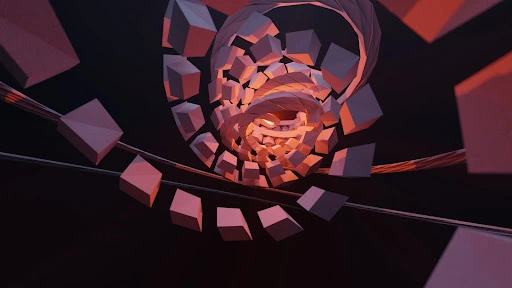
Technically speaking,
"Blockchain is a decentralized and distributed digital ledger technology that utilizes cryptographic techniques to record and link transactions into an immutable chain of blocks, maintained by a network of nodes through a consensus mechanism."
Let’s break it down and understand what all of it means step by step.
1. Decentralized and Distributed
Instead of being controlled by a single central entity (like a government or a business), a blockchain is typically spread across a network of computers called nodes. No single node has complete control, making it more secure and less vulnerable to hacking or manipulation.
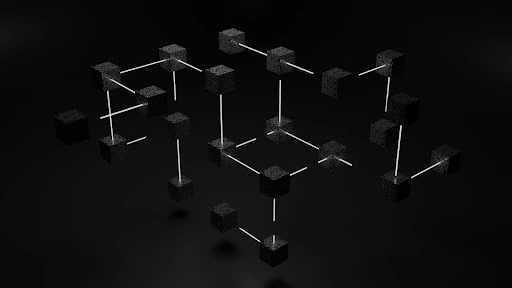
Note: Keep in mind that unlike “Public Blockchains”, “Private Blockchains” can be controlled by a central entity like a government or a business. For example, Hyperledger Fabric is a private and permissioned blockchain.
2. Digital Ledger
A digital ledger is just a fancy word for a record-keeping system. In traditional accounting, a ledger is a massive book of records where you write down all the financial transactions. Here, this "book" is digital and maintained across the network of computers we mentioned before.
3. Cryptographic Techniques
Cryptography involves using advanced mathematical algorithms to secure data. It is used across several aspects of a blockchain including digital signatures, hash functions, consensus mechanisms, and encryptions. As implied by its name, cryptography is a mechanism that makes the data cryptic, ensuring that transactions are protected and can't be easily altered.
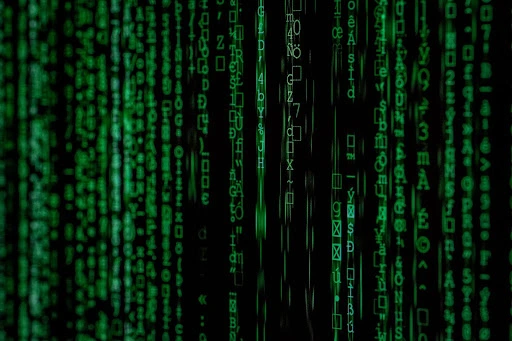
4. Transactions
In the context of blockchain, a transaction is any action that changes the “state of the system.” This can be a financial transaction, like transferring money between two people, or a non-financial action, like recording the ownership of a property or casting a vote. Each of these actions is like a note in our record-keeping system.
5. Immutable Chain of Blocks
"Immutable" means something that cannot be changed or tampered with. In a blockchain, once a transaction is added to a block, it's practically impossible to modify or delete it. Blocks are linked together in sequential order, forming a chain. This linkage ensures the integrity of the data.
6. Consensus Mechanism
To agree on the validity of transactions and maintain the blockchain, the nodes in the network follow certain rules and protocols. They must reach a consensus, meaning they must all agree before adding new blocks to the chain.
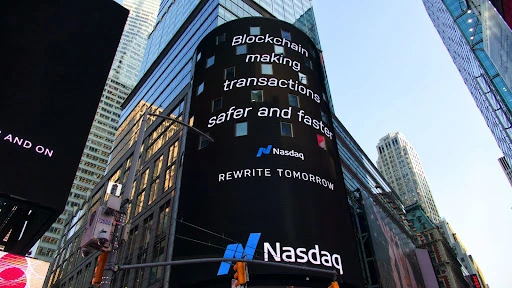
Blockchain can be used to verifiably record any type of data transaction, from cryptocurrency transactions to medical records, smart contracts, votes, identity documents, supply chain tracking data, and much more. The possibilities are vast.
Trivia: As of mid-2023, the total size of the Bitcoin blockchain has exceeded 475 GB, equivalent to a whopping 322,050,000 pages of text files! In contrast, the entire work of Shakespeare is roughly about 5 MB in size.
Simplifying Blockchain Further Through Analogy
Here's a relatable analogy to understand blockchain technology.
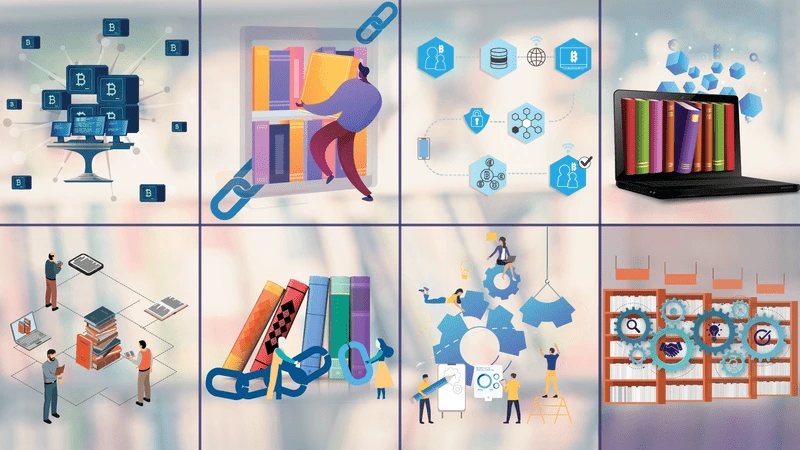
Imagine a public library with thousands of books. Each book represents a block on the blockchain.
The library is decentralized with no single entity controlling all the books. The books are distributed across various library branches (nodes on the network).
When a new book arrives, the librarian adds it to the shelves and indexes it. This is similar to a new block being added to the blockchain after validation.
Each book contains a reference to the previous book by the same author. This links the books chronologically like a blockchain.
The librarians across branches maintain a shared up-to-date card catalog (ledger) of all books and their order.
Readers can transparently check any book's location in the catalog. Like how blockchain transactions can be publicly viewed.
If someone maliciously tampers with an existing book, it will mismatch with the next book's reference. The librarians are alerted to the tampering.
Note: Although in real-world such tampering can go under the hood, the consensus mechanism of a blockchain ensures that the slightest mismatch gets detected. If so, the mismatch is resolved through consensus, eliminating the malicious block.
To agree on the catalog's accuracy, librarians follow a strict protocol (consensus mechanism). Changes require agreement among major library branches.
-
This collaborative process between decentralized librarians maintains an immutable record of books, mirroring how blockchain nodes validate transactions.
In summary, the library's tamper-proof catalog of linked books reflects the key principles of a shared, decentralized blockchain ledger.
Demystifying How Blocks Are Added to Blockchain Technology
Transactions are initiated by participants on a blockchain network. These are bundled into blocks by validators known as “miners”. Miners compete against each other to be the first to validate a block by solving a cryptographic puzzle known as proof-of-work or proof-of-stake. This requires significant computing power.
The first miner to solve the puzzle broadcasts their validated block to the network. All other nodes verify the block is valid and reference it to the previously added block using digital fingerprints called hashes. This links the blocks in chronological order, forming the ever-growing blockchain.
Once consensus is reached, the new block is added to every participant's copy of the distributed blockchain ledger. This decentralized process continues, with miners constantly working to validate new blocks and earn crypto rewards.
Understanding Blockchain Block by Block: The Imaginary Shipping Yard
Alright! Let's visit a busy international shipping yard with thousands of containers holding goods for export.

We'll focus on one container filled with wine bottles, ready to ship overseas from seller Anne to buyer Bob.
The yard manager John inspects this container and enters details like the container number, Anne and Bob's names, the number of wine bottles, etc. into his company app. This information gets broadcast to ports across the shipping network.
Port manager Emma bundles together the data on Anne and Bob's container with others being exported. To verify the accuracy, she cross-checks the container labels, customs docs, and other information.
Thousands of port managers race to validate their container batches first. But Emma wins - she is the first to successfully validate the data on Anne and Bob's container along with thousands of other containers.
This validation information becomes a permanent "block" on the company's blockchain-based shipping ledger that all ports can access. This tamper-proof record reflects the wine's journey from Anne to Bob (and the journey of thousands of goods in other containers.)
When the container reaches its overseas destination port, Bob can inspect this transparent blockchain ledger to verify the shipment's details before accepting the delivery.
Just like this container's export data, the blockchain provides an immutable record of transactions between participants on a decentralized network. And Emma is proud to bring these benefits of transparency and trust to global trade!
Blockchain Use Cases: From Supply Chains to Votes
Given blockchain's tamper-proof, transparent, decentralized properties, it lends itself well to recording sensitive information and transactions.
📌 Finance
Cryptocurrencies like Bitcoin enable peer-to-peer digital payments without banking intermediaries. Platforms like Ethereum allow decentralized finance apps for lending and trading without centralized institutions.
Example: PayPal enables users to buy, transfer, and sell cryptocurrencies through their accounts.
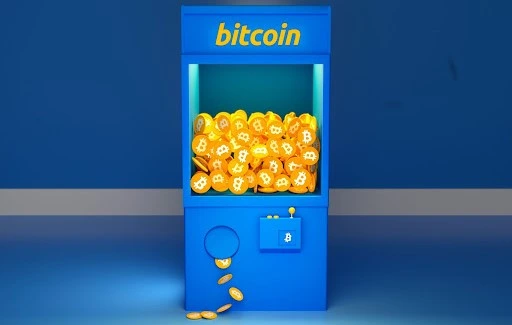
📌 Healthcare
Healthcare providers can leverage blockchain to securely share patient medical records. Each record can be chronologically logged and accessed only with patient consent.
Example: Pfizer, Novartis, Merck, and other healthcare players are either conducting pilots or actively exploring blockchain technology.
📌 Supply Chain
Global supply chains can use blockchain to track purchase orders, shipment status, and payments in real time between suppliers, vendors, and clients. This brings unprecedented transparency.
Example: IBM’s Food Trust (Supply Chain Intelligence Suite) is built on blockchain that helps track food items from farm to plate.

📌 Government
Government agencies can implement blockchain identity solutions to provide citizens with digital IDs that prevent fraud. Blockchain-based voting systems also enable transparent, tamper-proof elections.
Example: The U.S., the U.K., Sweden, and Singapore are actively driving blockchain adoption in e-services.
📌 Energy
Energy producers can use blockchain's decentralized structure for trading carbon credits, billing customers, and metering electricity usage without middlemen.
Example: Energy Web pioneered an open-source blockchain platform to facilitate clean energy trading between grid operators.
📌 Art, Media, & Entertainment
Blockchain lets artists distribute creative works directly to consumers without centralized publishers' skimming fees. The technology is also giving rise to novel art forms with Non-Fungible Tokens (NFTs.) And then, blockchain is the foundation of Web 3.0 and is believed to be pivotal for the metaverse.
Example: Imogen Heap's Mycelia enables musicians to manage and share creative works using blockchain-based smart contracts.
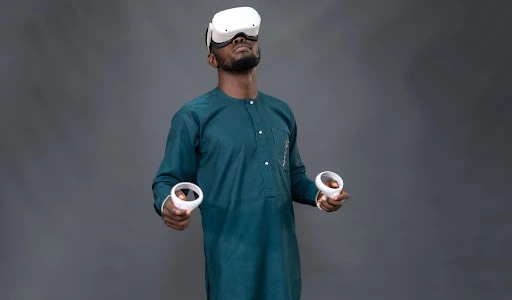
Also Read: NFT Marketplace Development: A Brief Guide
📌 Real Estate
Property sales and deeds can be recorded transparently on blockchain to simplify transfers and prevent disputes over ownership. Fractionalized ownership also opens investment in real estate to more buyers.
Example: Propy lets users remotely buy and sell property internationally using blockchain for deed record-keeping and payments.
📌 Diamonds and Minerals
The provenance and ethical sourcing of gems and minerals can be tracked from mines to retailers on an immutable blockchain ledger. This helps prevent issues like conflict diamonds.
Example: De Beers tracks diamonds from mine to store on its Tracr blockchain-based platform.
📌 Food Supply Chain
Blockchain improves traceability and accountability across the farm-to-table supply chain. It enables consumers to verify ethical and sustainable practices.
Example: Like IBM’s Foot Trust,Walmart uses blockchain to track more than 500 food items for faster recalls in case of contamination.
📌 Luxury Goods
High-value collectibles and luxury items like watches and handbags can have authenticity certificates stored on the blockchain to prevent counterfeiting and verify provenance.
Example: LVMH, Consensys, and Microsoft created Aura blockchain to ensure the authenticity of luxury products for customers.
📌 Sports Memorabilia
Blockchain lets fans verify authenticity and ownership records for collectible items like signed jerseys and balls. This prevents fraudulent merchandise from entering the marketplace.
Example: NBA uses blockchain so fans can purchase collectibles like highlight videos as digital tokens.

And the list goes on, and on, and on..
Why Does Blockchain Technology Matter?
Blockchain technology has become one of the most disruptive and transformative technologies of the 21st century. But, why does it matter so much?
In this section, we will explore the significance and potential impact of blockchain technology (and, by extension, distributed ledger technology) on society.
1. Decentralization Enables New Models of Organization and Governance
One of the core tenets of blockchain technology is decentralization. Rather than having data controlled and stored in a central location like traditional databases, blockchains distribute data across a network of computers. This eliminates centralized points of failure and control.
Decentralization enables new models of organization, collaboration, and governance. Communities can collectively manage shared resources on a blockchain, rather than relying on central institutions. This has major implications for finance, politics, economics, and beyond.
2. Enhanced Security and Reduced Risk of Fraud
Blockchains are incredibly secure thanks to their distributed structure and sophisticated cryptography through blockchain programming. Transactions are verified by network participants and immutably recorded on the blockchain ledger. This makes fraud and tampering virtually impossible.
For industries like banking and payments that deal with sensitive financial data, blockchain's security improves integrity and reduces systemic risks. Blockchains may also reduce corruption by enhancing transparency and accountability in governance.
3. Streamlined Systems and Frictionless Value Transfer
Sending money or assets across borders today often requires going through intermediaries like banks and payment processors. This added complexity increases costs and delays.
Because blockchains facilitate direct peer-to-peer transactions without intermediaries, they enable faster and cheaper cross-border transfers. For example, remittances to developing countries can be accelerated using blockchain. The process of trading securities, real estate, and other assets can also be streamlined via blockchain technology.
4. Launching Pad for New Technologies and Innovation
Beyond its direct applications, blockchain serves as the foundational infrastructure enabling countless other novel technologies. Smart contracts, decentralized finance (DeFi), decentralized apps (dApps), real estate tokenization, asset tokenization, autonomous organizations, NFTs, and the ability to create your own cryptocurrency are only possible with blockchain technology.
Also Read: The Legality of Launching an ICO in the U.S.
As a platform for permissionless innovation, blockchain technology may spawn new business models and blockchain solutions we can't yet imagine. The long-term implications are enormously far-reaching.
5. Empowering Individuals with Greater Control and Privacy
Blockchain technology has the potential to shift power and control from institutions to individuals. For example, self-sovereign identity puts users in charge of their own digital identities. And by connecting parties directly, blockchains reduce the need for gatekeepers that collect and exploit user data.
Blockchain-based platforms will enable individuals to have more direct control over their assets, data, and digital lives. This is exceptionally empowering compared to centralized models dominated by large intermediaries.
6. An Engine for the Future Digital Economy
As the digital world expands, blockchain technology promises to be the bedrock for next-generation systems of digital value. Dubbed the "Internet of Value", Web 3.0 supported by the blockchain infrastructure can drive decentralized digital economies at local and global scales.
From decentralized finance and digital collectibles, to supply chain tracking and automated smart contracts, blockchain applications are transforming economic activities online. The technology will likely be as influential and transformative as foundational protocols like HTTP and TCP/IP
All Hype? Is Blockchain as Revolutionary as it’s Spoken Of?
With all the hype around blockchain in recent years, it's natural to wonder - is this technology as revolutionary as people claim? Or is it all overblown?
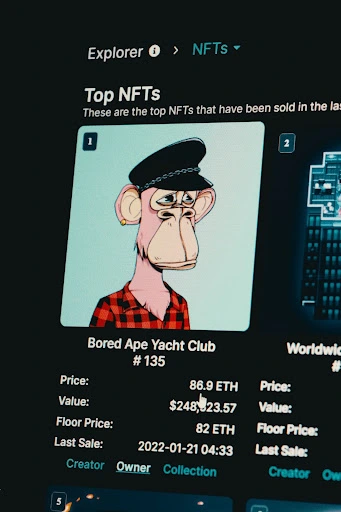
The answer likely lies somewhere in between. Here are some perspectives to consider:
⚡Incremental Innovation, Not Overnight Disruption
While blockchain enables new decentralized models, its disruption may be gradual. Many use cases like supply chain tracking are seeing incremental improvements, not an overnight transformation. Legacy systems aren't disappearing overnight.
⚡Not a Cure-All Solution
Blockchain has limitations. It's not a magic cure-all for every problem. In some cases, traditional centralized databases may still be preferable for efficiency and cost.
Also Read: Impending Doom or is Web3 the Future of the Internet?
⚡Adoption Remains Early and Limited
Despite the hype, blockchain adoption remains limited. Most people have little exposure to blockchain applications in their daily lives. Mainstream adoption at scale is still years if not decades away.
⚡Transformative Potential, But Long-Term Impact Still Uncertain
Blockchain's long-term effects are hard to predict accurately. But it does demonstrate truly game-changing potential across industries. Only time will tell if it lives up to transforming society.
⚡Game-Changing Foundational Technology
Even if direct disruption is gradual, blockchain as an enabling foundation for decentralized applications is incredibly powerful. It opens new possibilities we are just beginning to explore.
In summary, blockchain technology is neither vaporware nor a definitive overnight revolution. The truth exists somewhere in between - incremental change is happening alongside the technology’s transformative possibilities. And we are still early in realizing its full disruptive potential.
⚡The Future is Decentralized
Blockchain technology represents a monumental leap forward for decentralized systems. By distributing data across networks and using sophisticated cryptography, blockchain allows for transparent, secure, tamper-proof transactions and records.
From cryptocurrency commerce to supply chain tracking, blockchain is already demonstrating vast potential to streamline operations, reduce fraud, cut costs, and build trust. New decentralized models of organization enabled by blockchain can shift power away from centralized intermediaries back toward individuals and communities.
As a foundational protocol for the emerging digital economy, blockchain promises to revolutionize almost every sector much like the Internet did. We are still in the early innings of the blockchain transformation. Yet it is clear this technology will shape the future in ways we can only begin to imagine.
The 21st century will increasingly be decentralized. As blockchain adoption gathers momentum, its disruptive impact is poised to be deep and far-reaching across industries. The future is decentralized – and it is coming faster than you think!
Frequently Asked Questions
1. What is the main purpose of blockchain?
The main purpose of blockchain is to provide a decentralized, distributed, and immutable ledger for recording transactions transparently and securely with no central authority. It enables peer-to-peer transfer of value and data without intermediaries.
2. What are the benefits of blockchain?
Some key benefits of blockchain include
Decentralization: No single authority controls the network
Transparency: All participants can view transactions
Immutability: Transactions can't be altered or deleted
Security: Cryptography ensures integrity and prevents hacking
Efficiency: Removes intermediaries for faster transactions
Trust: Consensus builds trust in the validity of transactions
3. What are the disadvantages of blockchain?
Some potential disadvantages are
Complex technology: Steep learning curve for many users
Slow transactions: Some blockchains have scaling limitations
Energy intensive: Proof-of-work mining consumes significant energy
Uncertainty: Regulatory status is unclear in some jurisdictions
Nascent technology: Relative immaturity with limited adoption so far
4. How to develop your own blockchain?
To develop your own blockchain, the main steps are
Decide on requirements like use case, consensus mechanism, and permissions
Choose a platform like Ethereum, Hyperledger Fabric, Corda, etc.
Set up blockchain network infrastructure with nodes
Define transaction logic and write smart contracts if needed
Develop user interfaces and APIs for applications
Test network thoroughly and fix bugs
Deploy the blockchain on servers or cloud infrastructure
Expand network by allowing other nodes to participate
You can also tap into Global Blockchain Solution’s expertise in blockchain development and pick our brain in a 15-minute call.
5. Considerations to have while developing an enterprise blockchain?
When developing a blockchain for enterprise use, it's important to carefully consider aspects like
Decentralization Trade-offs: Balance between transaction speeds and the desired level of decentralization. A more centralized network may be faster but reduces certain blockchain benefits.
Consensus Models: Evaluate consensus models like PoW, PoS, DPoS, PBFT, etc. based on specific performance, security, and governance needs.
Permissioning: Determine if it should be a public permissionless blockchain or a private permissioned one based on the use case.
Scalability Plan: Have a plan to scale beyond pilot transactions to enterprise-grade throughput and latency.
Legacy Integration: Design integrations with existing systems from the start for hybrid deployments during the transition.
Cost-Benefit Analysis: Analyze if blockchain's benefits outweigh costs compared to traditional databases.
Partner Ecosystem: Collaborate with technology vendors, cloud providers, and system integrators to create an ecosystem.
Governance Model: Define protocols for ongoing management, upgrades, dispute resolution, and other governance aspects.
User Experience: Ensure smooth onboarding and usage for varied end-users through intuitive interfaces.
A holistic approach covering these key dimensions will lead to a successful enterprise blockchain implementation.

